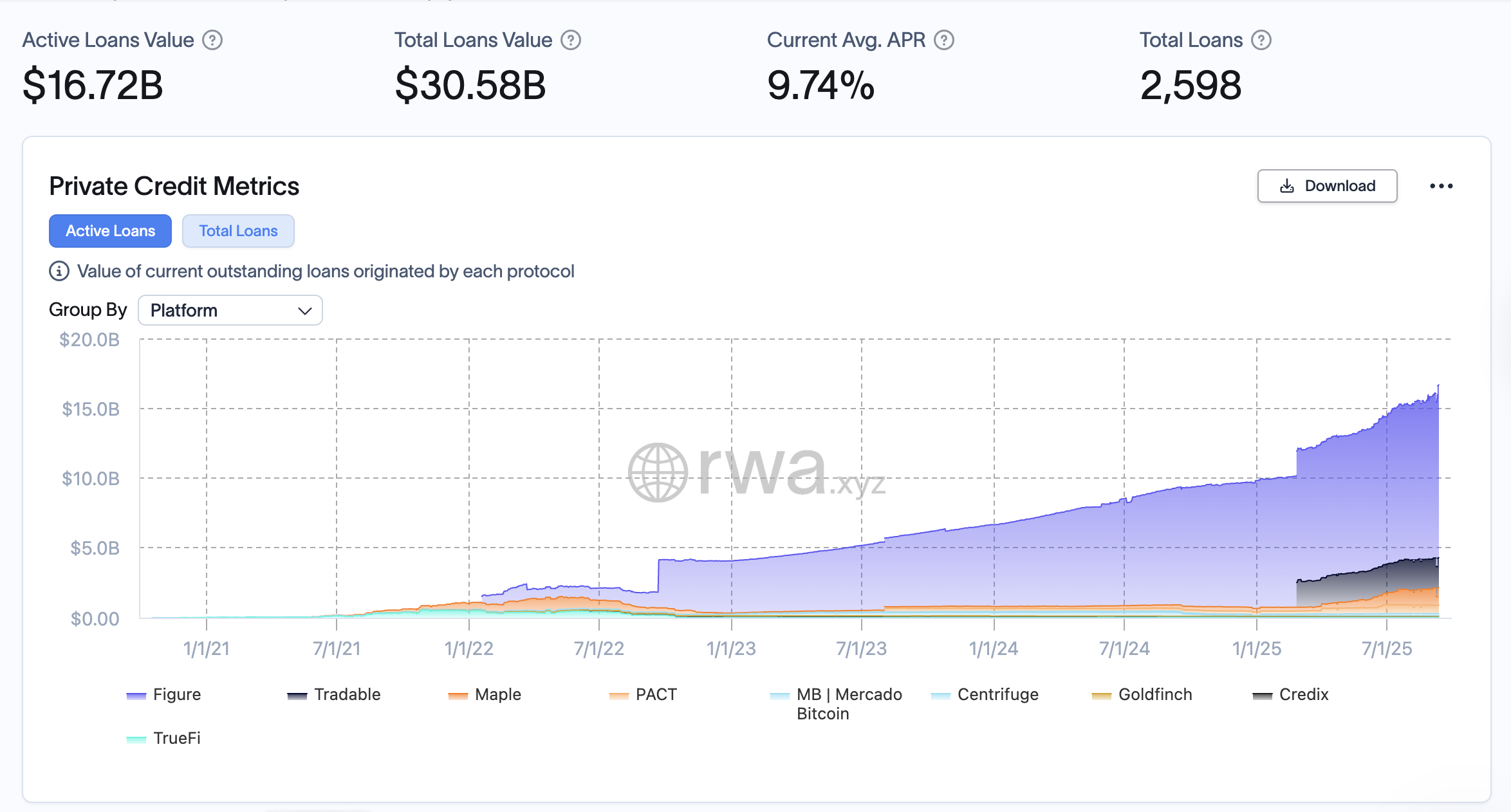Tokenized private credit is a digital representation of private loans and credit instruments issued on a blockchain. It increases liquidity and investor access by fractionalizing private credit, letting retail and institutional investors buy tokenized shares of private debt and alternative income funds.
-
What it is: Digital tokens representing private loans and alternative credit instruments.
-
How it expands access: Fractional ownership lets retail investors access previously illiquid markets.
-
Market size: Tokenized private credit instruments exceed $16.7 billion in onchain value.
Tokenized private credit: access private loans onchain; learn how tokenized funds expand investor access and liquidity — read actionable insights now.
Tokenized private credit and other tokenized alternative funds continue to grow as the legacy financial system migrates onchain.
Published: 2025-09-12 | Updated: 2025-09-12
What is tokenized private credit?
Tokenized private credit is the issuance of digital tokens that represent ownership in private loans, debt from REITs, business development corporations, or similar private credit instruments. These tokens enable fractional ownership, faster settlement, and secondary-market trading for assets traditionally limited to institutional investors.
How does WisdomTree’s CRDT fund change investor access?
WisdomTree launched the Private Credit and Alternative Income Digital Fund (CRDT) to tokenize private credit exposure. The fund includes credit to private corporations, loans to real estate investment trusts (REITs), and business development corporation debt. By tokenizing the fund, CRDT makes private credit available to both retail and institutional investors, widening participation in the asset class.

The tokenized private credit market continues to grow. Source: RWA.XYZ
Why is tokenization gaining momentum among major institutions?
Large financial institutions are testing tokenized funds to increase capital velocity, reduce settlement friction, and enable new use cases such as using tokenized assets as collateral in decentralized finance. Recent institutional moves include tokenized money market fund access from Goldman Sachs and BNY Mellon, State Street’s role in JPMorgan’s tokenized debt platform, and pilot settlements involving Chainlink, UBS, and DigiFT.
How big is the tokenized private credit market?
Tokenized private credit instruments now account for over $16.7 billion in value, according to RWA.xyz. Growth has been steady since 2021, with tokenized alternative funds showing rapid month-over-month increases in market cap and adoption.
How can investors evaluate tokenized private credit funds?
Evaluate tokenized private credit by examining the fund’s underlying assets, custodian arrangements, onchain settlement mechanics, governance structure, fee profile, and regulatory disclosures. Confirm custodian and settlement partners, review official fund documentation, and assess liquidity parameters and secondary-market listings.
Frequently Asked Questions
Can retail investors buy tokenized private credit?
Yes. Certain tokenized funds are structured for retail participation. WisdomTree’s CRDT is an example of a tokenized private credit fund available to retail and institutional investors, though investor access depends on fund rules and local regulations.
How is tokenized private credit valued and reported?
Valuation follows the fund’s pricing policies and underlying credit valuations, often reported by the fund manager. Onchain records show token supply and transfers, while valuation relies on offchain asset appraisals and fund NAV disclosures.
Key Takeaways
- Democratization: Tokenization widens access to private credit by enabling fractional ownership.
- Liquidity: Onchain tokens can improve secondary-market liquidity and settlement speed.
- Institutional adoption: Major institutions (Goldman Sachs, BNY Mellon, State Street, JPMorgan, BlackRock) are piloting or offering tokenized products, accelerating market maturation.
Conclusion
Tokenized private credit is rapidly evolving as asset managers like WisdomTree bring tokenized funds to market, and large financial institutions pilot custody and settlement solutions. As tokenized funds scale, investors should evaluate fund governance, custody, liquidity, and regulatory disclosures. For practitioners and investors, the move onchain signals a structural shift in how private credit and alternative income can be accessed and traded.
